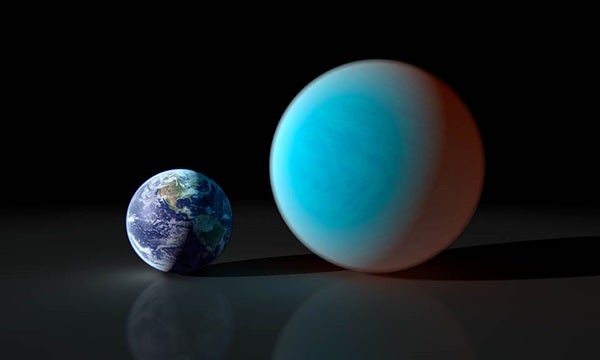The super-Earth appears to have an atmosphere dominated by hydrogen, nitrogen, and oxygen, much like Earth. But it completes an entire year in just 18 hours and has a day side that reaches 4,200 degrees Fahrenheit (2,300 Celsius).
The evidence comes from the Spitzer Space Telescope, which witnessed several transits of the hot, hot planet. By looking at variations in the infrared emissions from the planet, astronomers deduced that the temperature ranges could only be explained by the presence of an atmosphere. The “cold” side, which never faces the parent star due to tidal locking, still reaches up to 2,400 to 2,600 Fahrenheit (1,300 to 1,400 Celsius), meaning something is transporting heat from the day to the night side. That something was once thought to be lava, which was envisioned to encase the planet. But lava would move the heat too slowly, and now astronomers believe that “something” is a thick atmosphere.
Still, researchers hadn’t expected to see any atmosphere around a planet so (relatively) small so close in to its star. Mercury, the closest-in planet in our solar system, has only a tentative atmosphere that must be continually renewed as it’s barraged with particles.
Further studies on the plane should be able to draw out more details of its atmosphere and find out how it managed to cling onto it for dear life.










